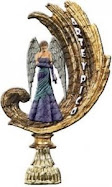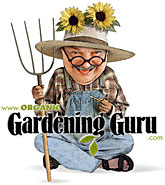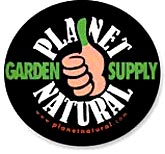"The time has come, the Walrus said, to speak of many things—" I’ll write about the relevant things too, but not this time.
These days I’m writing an article, a website really, on organic lawn care for Planet Natural, which I think of as my little local organic gardening store. That’s a bit (but only a bit) like thinking of the Mayo Clinic as your corner drugstore since Eric Vinje, who runs the place, ships products all over North America and gets interviewed on a semi-regular basis for a lot of "green" stories these days. And that is the fault of the ladybugs, which is another story.
"Yeah, I just got off the phone with this guy from –" what was it this time, the Washington Post? I forget. If he’s looking for sympathy, he’s looking in the wrong place. He may be Mr. Rising Star of the organic gardening, but we’re a ways yet from a point at which I have to call him "sir" or he has to tuck in his shirt.
So like I said, I’m writing this article, and the most amazing stuff drifts across my computer screen. It’s one of the fringe benefits of the research-and-write job: there’s all the information you learn about the actual topic, but there’s all this other stuff too, the odd facts that come zinging in at an acute angle to the story as I understand it, go whang into the center of the piece and stick there, quivering.
Here’s a sample:
There are over 200 public lawn bowling greens in present-day Glasgow.
The Levitts, who built some of the early cookie-cutter suburban developments in the US, (including the first Levittown, on Long Island) didn’t believe in basements (they pioneered cement-slab houses), but they set up a little newspaper for each development.
–The first North American golf courses were built in Canada.
–Up to 50% of homeowners who use pesticides don’t read the labels or follow the directions.
–Clover used to be considered a desirable part of upscale lawns.
–Almost none of the turfgrasses available in North America are native to the continent.
–Lawn bowling or one of its close cousins is five to seven thousand years old.
–The pesticide Mancozeb is marketed under at least fifteen other names.
–Almost everything Americans (Canadians too, probably) did to care for their lawns in the 50s encouraged crab grass.
–A hundred and thirty-eight Canadian towns and cities (including 2 million-strong Toronto) and one entire province (Quebec) have banned the cosmetic use of all synthetic pesticides.
–Switzerland banned 2,4D in 1988.
–You can vacuum up cinch bugs from a lawn, and at least one parks director in Nova Scotia does so regularly.
–In parts of Canada, pyrithium is legal against certain pests, but insecticidal soap and NEEM are not. Go figure.

 Subscribe to RSS feed
Subscribe to RSS feed


